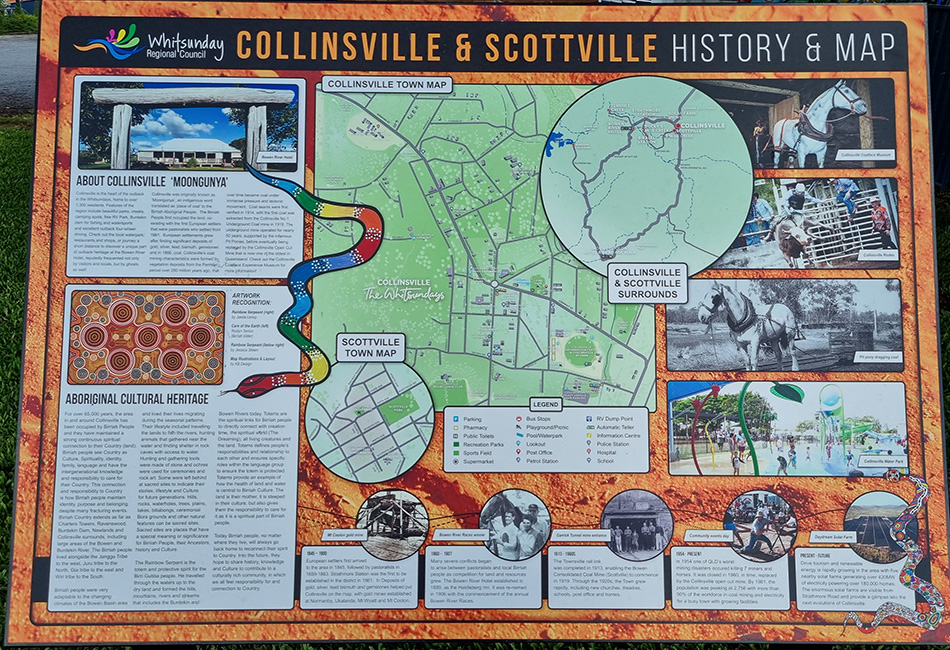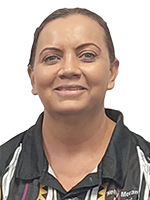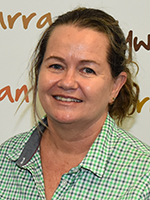Birriah Caring for Country plan comes together at workshops
Participants in the January workshop, pause to record the occasion with a photograph.
During the past six months several Birriah families have been working together to develop a Caring for Country Plan at a series of workshops in Townsville, Collinsville and Ravenswood.
The most recent workshop in mid-January attracted more than 35 participants, demonstrating a high level of interest and commitment.
The workshops were facilitated by Birriah Aboriginal Corporation Director Carolyn Kemp, and the Birriah Board of Directors, with support from Leah Saltner and NQ Dry Tropics.
Ms Kemp said the meetings were a great opportunity to unite Birriah families, share intergenerational knowledge, and identify priorities for Country.
“Due to impacts of colonisation, a lot of Birriah families don’t have access to Country as often as they want to,” Ms Kemp said.
One of the younger workshop participants, Jaeda Lenoy, said being involved with the process had increased her understanding of Birriah history.
“Our spiritual connection has not been broken and we are united in our need to care for Birriah Country,” Ms Lenoy said.
“It’s a wonderful project that brings together youth and older generations to share with one another, and enhance our understanding of culturally significant priorities.
“It also allows us to understand what happened in the past that we weren’t aware of.”
The Queensland Government awarded Birriah Aboriginal Corporation a Looking After Country Grant to develop the Caring for Country Plan.
NQ Dry Tropics provided additional support through its Healing Country 2.0 project, funded by the Queensland Government’s Reef Assist program, under the Queensland Reef Water Quality Program.
NQ Dry Tropics Partnerships Coordinator, Karen Vidler, has been providing support to Birriah Aboriginal Corporation and said there was a need for more opportunities like this that support Traditional Owner groups to return to Country and lead the development of their own Caring For Country priorities.
“These workshops and activities have enabled all the different kinship lines who are scattered across the state to come together, reconnect, and share stories and knowledge,” Ms Viidler said.
“Intergenerational sharing is so important — it is healing and part of caring for Country through the people themselves.
“This is a valuable outcome of this project, and to be a part of it is inspiring.”
It’s about Traditional Owner stewardship
A new activity area for the LDC project is Traditional Owner Community Stewardship and Empowerment.
The aim is to support Traditional Owner groups and key regional stakeholders to work together to improve access to Country and capacity and partnership arrangements to deliver natural resource management outcomes in the Broken, Bogie and Bowen catchments (BBB).
NQ Dry Tropics is in the throes of finalising the appointment of an On Country Project Officer.
The new project officer will work primarily with the LDC project team, graziers, and Traditional Owners supporting projects in the BBB, with a goal to increasing Traditional Owner involvement in land management and monitoring activities.
Signs explain the history of the Birriah People, the Traditional Owners around Scottville, Collinsville
Whitsunday Regional Council commissioned new signs to include Aboriginal cultural heritage recognition. They have been installed at various locations in Collinsville and Scottville.
Birriah Aboriginal Corporation and Birriah Traditional Owners provided input and artwork to achieve a great outcome that improves the visibility of Birriah Traditional Owners and history in the area.
Although not directly involved, the Landholders Driving Change project is happy to publicise this development through The Grit.
The wording about Aboriginal Cultural Heritage in the region on the sign:
For over 65,000 years, the area in and around Collinsville has been occupied by Birriah People and they have maintained a strong continuous spiritual connection with their Country (land). Birriah people see Country as Culture, Spirituality, identity, family, language and have the intergenerational knowledge and responsibility to care for their Country. This connection and responsibility to Country is how Birriah people maintain identity, purpose and belonging, despite many fracturing events. Birriah Country extends as far as Charters Towers, Ravenswood, Burdekin Dam, Newlands and Collinsville surrounds, including large areas of the Bowen and Burdekin River. The Birriah people lived alongside the Jangga tribe to the west, Juru tribe to the North, Gia tribe to the east and Wiri tribe to the south.
Birriah people were very adaptable to the changing climates of the Bowen Basin area and lived their lives migrating during the seasonal patterns. Their lifestyle included travelling the lands to fish the rivers, hunting animals that gathered near the water and finding shelter in rock caves with access to water. Hunting and gathering tools were made of stone and ochres were used for ceremonies and rock art. Some were left behind at sacred sites to indicate their stories, lifestyle and Culture for future generations. Hills, rocks, waterholes, trees, plains, lakes, billabongs, ceremonial Bora grounds and other natural features can be sacred sites. Sacred sites are places that have a special meaning or significance for Birriah People, their ancestors, history and Culture.
The Rainbow Serpent is the totem and protective spirit for the Birri Gubba people. He travelled through the waters up to the dry land and formed the hills, mountains, rivers and streams that includes the Burdekin and Bowen rivers today.

One of the signs, this one in the main street of Collinsville.
Totems are the spiritual links for Birriah people to directly connect with creation time, the spiritual world (The Dreaming), all living creatures and the land. Totems define people’s responsibilities and relationship to each other and ensure specific roles within the language group to ensure the totem is protected. Totems provide an example of how the health of land and water is central to Birriah Culture. The land is their mother, it is steeped in their culture, but also gives them the responsibility to care for it as it is a spiritual part of Birriah people.
Today Birriah people, no matter where they live, will always go back home to reconnect their spirit to Country. In the future, they hope to share history, knowledge and Culture to contribute to a culturally rich community,in which we all feel responsibility for and connection to Country.



